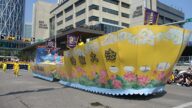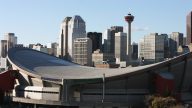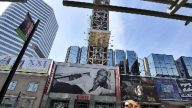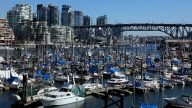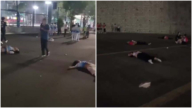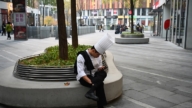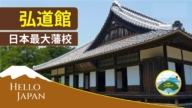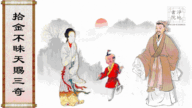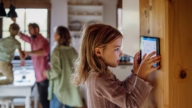【新唐人2012年6月24日訊】如何寫電視記錄片提案
企劃與編劇是電視記錄片的靈魂,參考一下吧~~
WRITING A BETTER ITVS TREATMENT
“If a story is in you, it has got to come out."
– William Faulkner
提案
In the treatment section of the ITVS proposal we ask you to communicate your passion and to explain how you envision translating your story from page to screen – taking into account structure, theme, style, format, voice and point-of-view. What do these words really mean? Here, members of the programming staff offer notes on writing an effective treatment. Remember, these are only suggestions; your treatment will undoubtedly be unique – tailored to the specific demands of your story.
關於電視記錄片的提案,我們要求你傳達你的熱情,闡釋你如何構思把一個書面的故事轉化到屏幕上——考慮結構、主題、風格、形式、語態以及觀點。這些究竟包 含甚麼樣的內容呢?在此,節目製作人就如何寫一個有效的文案提供了一些建議。記住,這些只是一些建議﹔你自己的文案毫無疑問才是唯一最適合於你的故事的表 達。
PASSION
When writing the treatment, don’t be afraid to infuse your words with passion. Your excitement and sense of urgency should be contagious.
熱情
當你寫提案時,不要擔心把你的熱情注入你的文字。你的興奮和緊迫感應當是具有感染力的。
STRUCTURE
Like the frame of a house, or a human skeleton, structure holds up all the parts of a story, supporting and organizing the elements into a coherent and interrelated dramatic whole. Structure determines how the story will unfold dramatically, how it will build – moving through moments of tension and conflict – from beginning to middle to end. Structure is the road a reader takes through the dramatic terrain of the program.
結構
就像一座房子有框架,一個人有骨架一樣,電視記錄片也要有一個結構,來支持故事的所有部分,也就是把各個元素組織結構到一個連貫的有機的戲劇整體當中。結 構決定了故事的展開方式,以及從開頭、發展到結局的建構方式——如何通過張力和衝突來推進故事的發展。結構是給讀者的一條路,通過這條路,讀者可以了解節 目的劇本結構。
One obvious structural framework is chronology – for example, following a character through an event in their life from start, through transformative changes, to finish. But there are as many possible structures as there are stories. The key is to find the one that fits, so that the reader/viewer is drawn in, compelled to stay, to discover the outcome. If you don’t know the outcome of your story, you can help the person evaluating your treatment by speculating a little, spelling out possible twists, turns and endings. Tell us what the overall story is, what happens in the course of a half hour or an hour, what we will have learned by the end that we didn’t know at the beginning. Try describing a key dramatic moment in detail, and locate it in the context of the whole story, so we get a sense of the program’s emotional trajectory.
一個最常見的結構線索就是以時間為序——例如,通過生活中發生的一件事的開始、演變,到結束,組織文章。但是,也有許多像故事一樣的結構。關鍵是要找到一 種適合的方式,可以讓讀者/觀眾被吸引,被迫停下來,來尋找結果。如果你不知道故事的結果,你可以通過一些假設,通過揭示可能的糾結、轉變和結局來幫助這 個人被你的文案吸引,進行評判。告訴我們整個故事是甚麼,在半個小時或者一個小時的時間裏,發生了甚麼,我們會從結局中了解到甚麼,這個結局我們一開始並 不知道。盡量通過細節來描述關鍵的戲劇性時刻,把它放在整個故事的背景當中,這樣,我們可以感受到這個節目的情緒軌跡。
THEME
Theme is what your story is really about – the underlying point your story is making. While your program tells a specific story rooted in a particular time and place, it no doubt addresses an overarching societal issue or universal human concern. Like a cell’s DNA, this theme should be embedded in every scene of your show, keeping it focused and on track.
主題
主題就是你的故事實際要表達的是甚麼——你的故事的根本點(the underlying point).當你的節目講述一個植根於具體的時間和地點的故事時,它無疑表達了一個包羅萬象的社會問題或者全人類共同關注的問題。就像細胞裡的DNA,主題應當被植入到片子的每一個場景當中,使得人們關注這個事件,以及發展的軌跡。
STYLE
Style refers to a variety of tools one can mobilize to give the story a distinctive quality, feel, look or tone. Style can be articulated through camera work, editing, sound design, score, lighting, production design, interviewing technique, etc. Every stylistic choice becomes a signifier, telling the viewer something important about the story.
風格
風格指的是一個人可以動用的各種手段花樣,目的是讓故事呈現出與眾不同的特性、感受、外貌或者品質。風格可通過攝像、剪輯、音效、配樂、燈光、美工、採訪等手段來共同建構。每一種風格的選擇變成一種標識,告訴觀眾關於這個故事的重要部分。
We encourage you to be specific when describing why and how you will engage stylistic tools. For example, what framing, composition, lighting or camera angle choices best serve the story? What editing strategies will accomplish the desired pace and rhythm? What kind of sound effects and score will you employ? Where will interviews take place and what interviewing method is most appropriate? If you are working with actors, what directing style will you use? What is your vision for the production design? If you are relying on still photographs or archival footage, how will you integrate them into the narrative? Use concrete examples to explain how style will illuminate the subject matter and theme. Be economical and deliberate.
當描述你為甚麼和怎樣使用風格化的手段時,我們主張你說得更具體些。例如,取甚麼樣的景,甚麼音樂,甚麼樣的光或者鏡頭角度如何選擇可以更好地表達故事? 甚麼樣的剪輯方案可以完成你預期的節奏?你種被採用哪種音響效果和配樂?應該在哪兒採訪,用甚麼樣的採訪方式最合適?如果你起用了演員,那你要用甚麼樣的 導演風格?你對美工的視覺要求是甚麼?如果你打算使用一些照片或者資料影片,你打算把它們如何組織到你的敘事當中?使用具體的例子來解釋風格如何闡釋節目 的主旨和主題。要簡潔而深刻。
Reading the treatment, we should be able to visualize your program and get a sense of how it will make us feel as we watch.
閱讀提案時,我們就應該可以把你的節目視覺化,感到好像我們正在觀看。
FORMAT: LENGTH AND SHOOTING FORMAT
To conform to standard public television broadcast lengths, your program must be either 26:40 or 56:40 minutes. Make it clear why the story is best told in either the half-hour or one-hour format.
Regarding the shooting format, explain why a particular format – for example, 16mm, digital video or beta – facilitates the stylistic and structural demands of the piece.
格式:長度和拍攝格式
為了達到公視節目的標準,節目的長度一般要麼是半個小時,要麼是一個小時。要很清楚為甚麼這個故事應當用半個小時講或者一個小時講。
根據拍攝的格式,解釋為甚麼採用具體的格式——例如,16mm, DV 或者 Beta——更容易實現這個節目的風格和結構需求。
VOICE AND POINT-OF-VIEW
“Voice" can be a many-layered thing. When considering voice, we have to ask, Who is the storyteller and whose story is being told? The answers to these questions determine not only the viewer’s sense of intimacy with the characters, but the program’s point-of-view. In a truly personal story, the teller and subject are one and the same. When a maker represents another character or community, it is useful to be conscious of the ways storytelling can mediate the voice of the subject or main character.
語態和觀點
語態可能是一個多層面的東西。當考慮語態時,我們必須要問,誰是故事的講述者,講的是誰的故事?對於這個問題的回答不僅僅決定了觀眾和人物之間的親密感, 而且也決定了節目的觀點。在一個真實的個人的故事當中,講故事的人和被拍攝者是同一個人。當拍攝人員代表另一個人或者社會團體出現時,這是非常有用的,意 識到這種講故事的方式可以調和第一人稱或者主要人物的語態。
SYNOPSIS AS DISTINCT FROM TREATMENT
Like a thumbnail sketch or abstract, a synopsis is a condensed statement outlining the subject of the program and the story the program will tell. The synopsis might also briefly summarize the background of the program, that is, the larger context out of which the story emerged. Save the specific description – how you plan to tell this story – for the treatment.
提案清晰的大綱
大綱是對節目的主要內容或者故事的濃縮提煉。大綱也可以對節目的背景做簡要的總結,也就是說,故事所發生的大環境。對於提案來說,就是把你打算如何講這個故事的具體描述省去。
文章來源:
http://likechen.blogbus.com/logs/45059584.html




